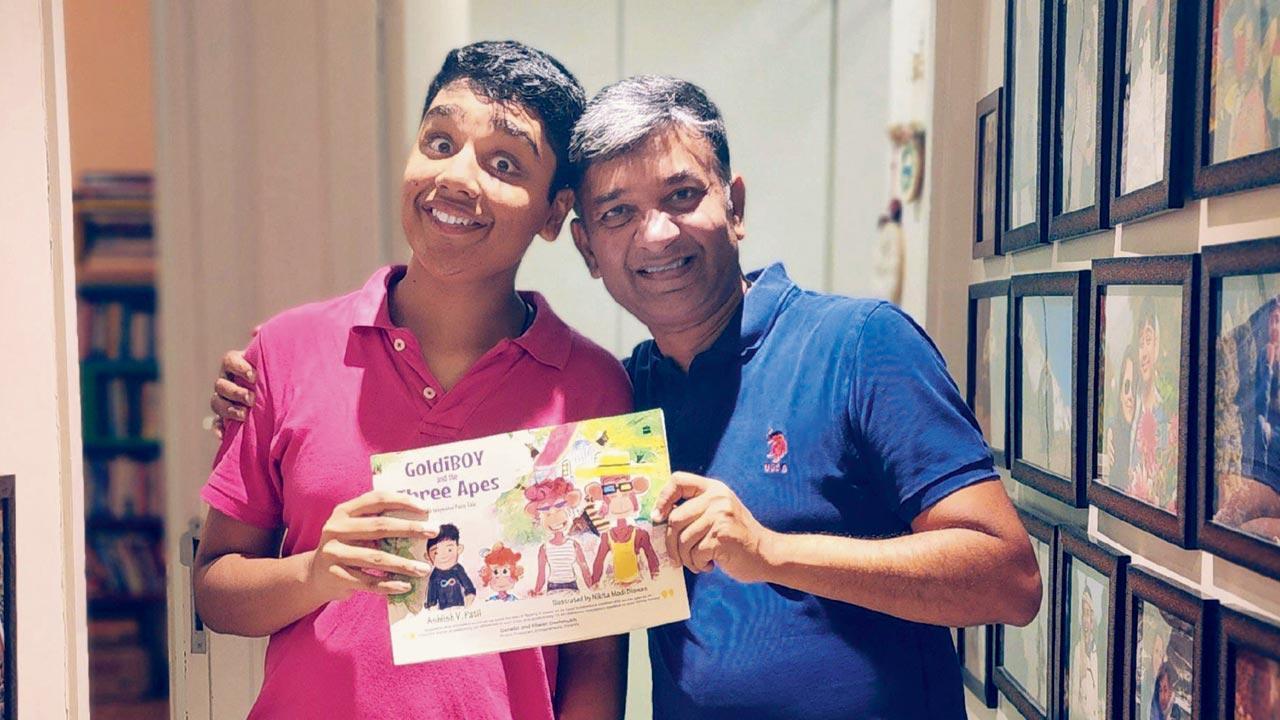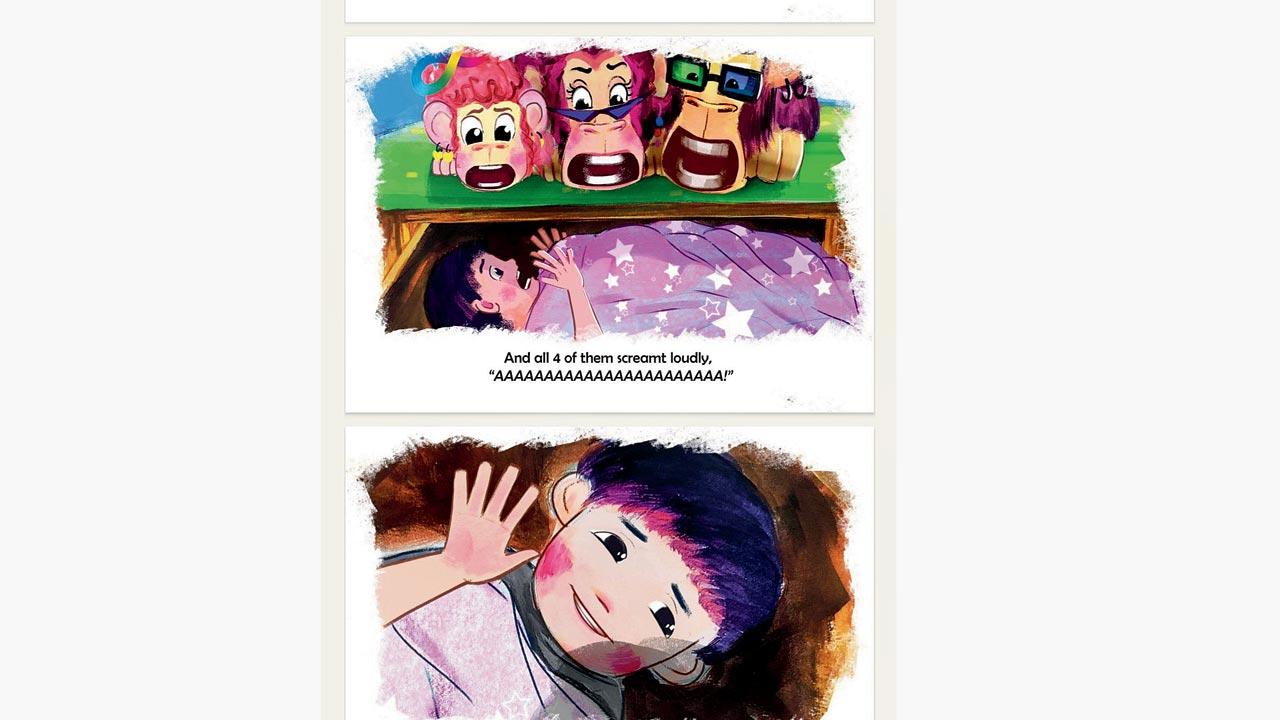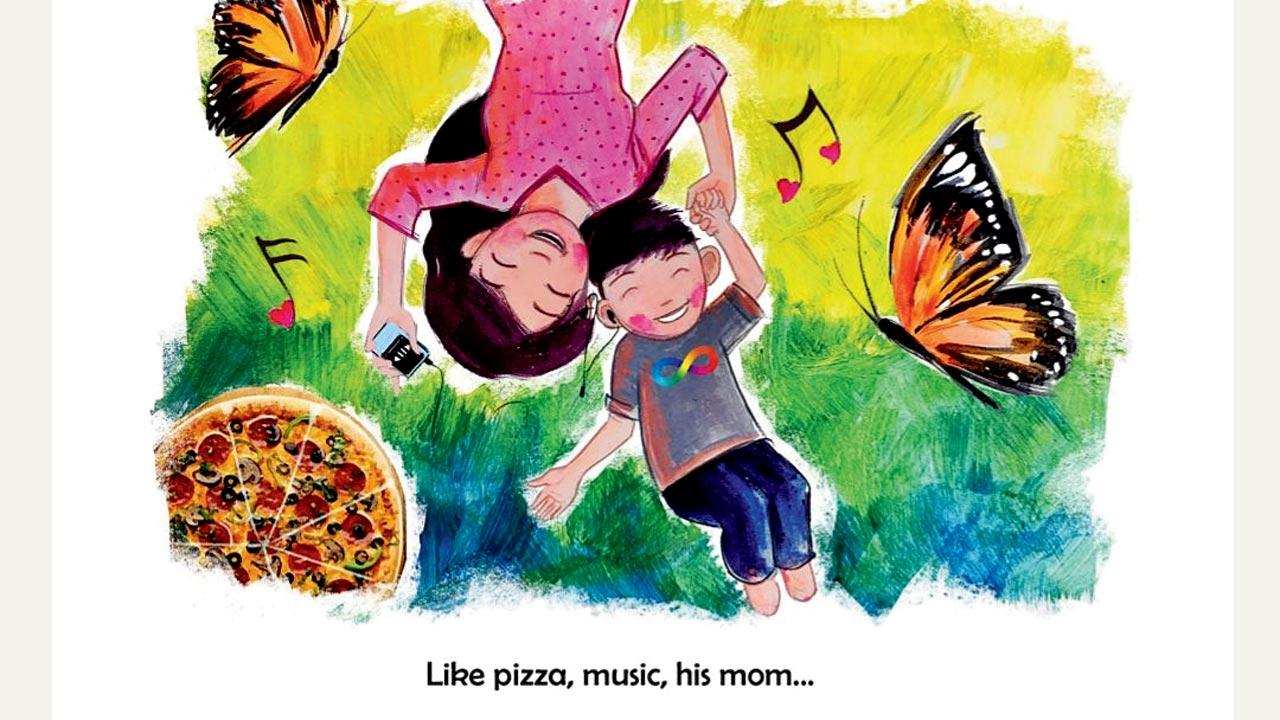A heartwarming desi hat tip to the classic, Goldilocks and the Three Bears introduces children and adults to the world of neurodiversity

Writer Ashiish V Patil with (left) his son Risshan
Goldilocks and the Three Bears written by Robert Southey was our favourite book in school. We remember reading it over and over until the pages were worn out. So, recently, when we learnt about a ‘special’ version of it written by a father whose son is on the spectrum, we thought of calling for it.
ADVERTISEMENT
Goldiboy and The Three Apes: An Isspeshal Fairy Tale (HarperCollins) is an autistic boy’s heartwarming story about neurodiversity, inclusivity and compassion. It is written by Ashiish V Patil whose son, Risshan (now 17 years old), was diagnosed with autism at the age of 2.5 years. Beautifully illustrated by Nikita Modi Biswas, the title brings to light several aspects including how the central character Goldiboy finds it hard to make friends or how loud, crowded or noisy spaces would make him cry out loud.
 The plot centres on an autistic boy’s heartwarming story
The plot centres on an autistic boy’s heartwarming story
“The journey from awareness, understanding, acceptance to celebration is where we are now. People fear what they are not aware of or what they don’t understand and that often leads to discrimination — be it race, religion, gender, social status, ability or disability. But no one wants to listen to a sermon, tell them a story instead, and they will listen up. There’s so little information available in an audience-friendly avatar about neurodiversity and autism — most of the material is either very ‘academic’ or a bit of a sob story. I thought of writing something to address this gap by penning a fun story,” he elaborates. “Risshan feels like he is the hero of the book [which he is], and identifies with the songs, pizzas and situations in the book. He feels seen, special and possibly understood,” says Patil.
Patil wrote the book in a week when he tested positive for COVID-19, and was in quarantine. It took over a year to illustrate it, as he brainstormed every frame with Biswas. The book includes 100-plus hand-drawn illustrations. “We spent time making sure we got the nuances and neuro-affirmative language right,” he recalls. Screenwriter Vaibhav Vishal has transcreated the book in Hindi using lyrical verses. “His wicked sense of humour was just right for our Hindi draft. We hope to translate the book in multiple languages across the world so that this small but important message of understanding, accepting and celebrating differences reaches as many people as possible. It feels good when people in the community write in, saying that they finally feel represented, seen, and heard and that it has helped those around them to understand their world better,” reveals Patil. The Centre for Autism and Other Developmental Differences will receive 100 per cent of all the author’s earnings from the book. There is a line of merchandise based on the characters and themes as well, and Patil is hoping for it to be converted into an audiobook, an animation series, and a movie.
 Nikita Modi Biswas took over a year to create more than 100 illustrations in the book
Nikita Modi Biswas took over a year to create more than 100 illustrations in the book
The thing with ‘invisible’ disabilities is that it is likely there is someone in your circle with autism, and you might not be aware of it. So, if the book helps you grow closer to a cousin who is on the spectrum or better understand that quiet girl in your class or workplace — its job is done.
At Leading bookstores and estores
Cost Rs 599
 Subscribe today by clicking the link and stay updated with the latest news!" Click here!
Subscribe today by clicking the link and stay updated with the latest news!" Click here!







